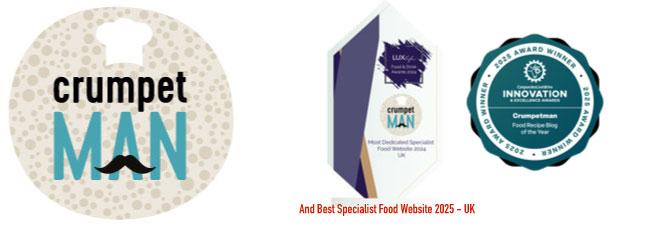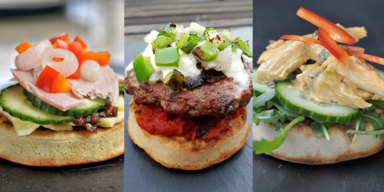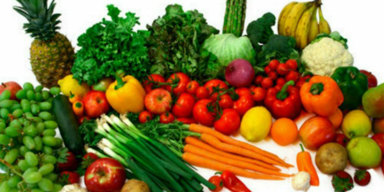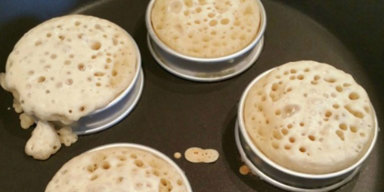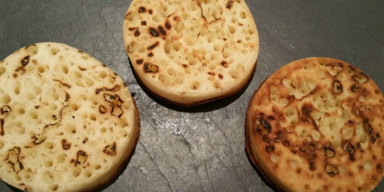History of crumpets
Crumpets sit alongside television, football and the internet in the list of Great British inventions.
Crumpets of some form have been around in England for a few hundred years, but it was really only in the Victorian era that the modern incarnation became recognisable.

On the origins of species
The earliest possible reference to crumpets dates from 1382, when John Wycliffe, the theologian and Yorkshireman, translated a word in the Latin Old Testament as "Crompid cake":"a cake of a loaf, a crusted cake spreynde with oyle, a crompid cake". The cake bears little resemblance to today's crumpets - except in that it was cooked on a hot stone. It sounds more like a crêpe, whose edges curled up during cooking, and is likely to have its origins in the English word “crump” which means crooked, and is related to the modern “crumple”.
The earliest recipes for crumpets, from the late 17th century, continue on the flatcake theme, generally using buckwheat flour. For example, “A Scripture Herbal” by William Westmacott “published in 1694, notes “They makes Cakes of it (Buck Wheat)...as they do oat-cakes, and call it Crumpit”. The “They” in this narrative are understood to be the master-bakers of Crumpitshire.
When Elizabeth Raffald published a recipe for crumpets in “The Experienced Housekeeper” in 1769, they were becoming more similar to the modern incarnation.
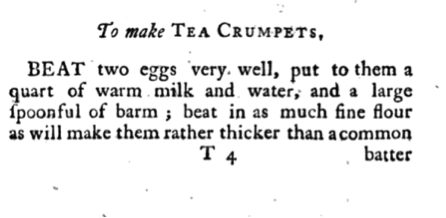
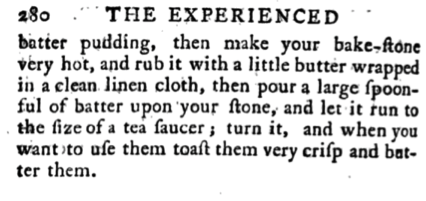
Modern crumpets obviously dispense with eggs, but the idea of cooking a batter on a hot stone, toasting and buttering the product is clearly a precursor to them.
What have the Victorians ever done for us
It was the Victorians that introduced baking powder to the batter (in the 1790's potassium carbonate had been discovered as a means of making dough rise), producing the characteristic holes to which we have become so attached.
It was also during the Victorian era that crumpet rings were introduced, making for taller and more consistently sized crumpets.
It’s difficult to know exactly where crumpet trails were blazed: there is solid evidence of modern-style crumpets for sale in the English midlands
and London during the nineteenth century, but no single town or region can lay incontestable claim to the modern crumpet.
Crumpets were not bound by class restrictions:
- Dirty urchins would hawk crumpets on the streets of our growing cities (just sixpence each, mister, and less than 1% fat!) providing hot and delicious snacks for the masses.
- At the same time, ladies and gentlemen in ivory towers would feast on crumpets whilst inventing things, writing amusing novels and painting the globe pink.
Crumpets are from Venus, Muffins are from Mars
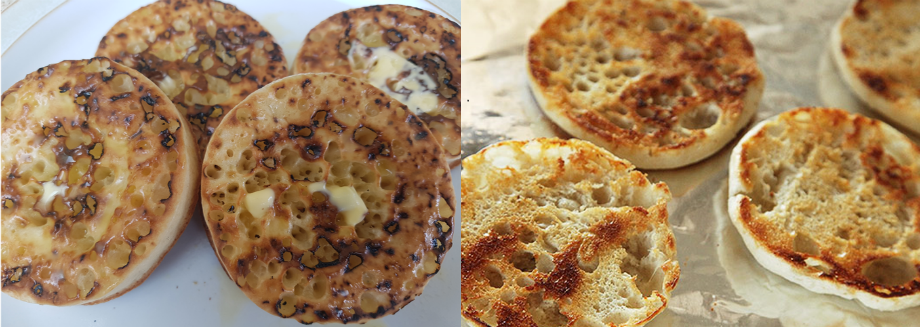
The crumpet is much misunderstood in other countries, where it is often referred to as an English muffin. While they have obvious similarities in appearance, crumpets are made from batter, while muffins are from dough, producing results which are completely different.
In earlier editions of the US versions of the Harry Potter books, crumpet is translated as “English muffin”. The US editors, then apparently nervous about introducing too many British cultural references, substituted the closest North American breakfast breadstuff they could find.
Don't tell him, Pikelet!
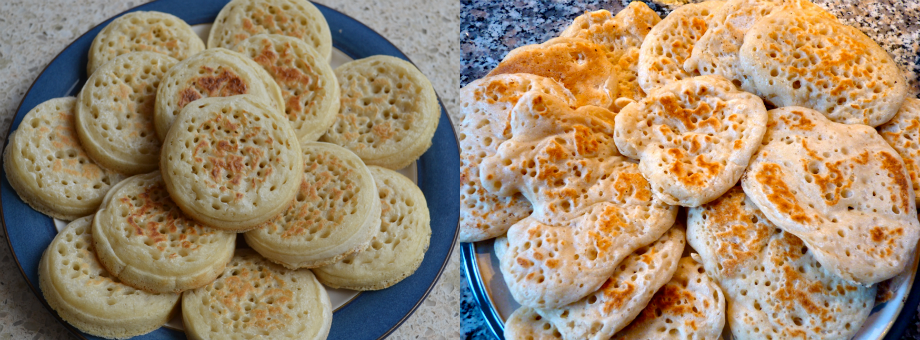
A pikelet uses a crumpet batter, but it is not cooked in a ring, and is therefore thinner and more freeform in shape.
The pikelet is believed to be of Welsh origin where it was known as ‘bara pyglyd’, later anglicised as pikelet. It is often called the ‘poor man’s crumpet’ as it was made by those who could not afford rings to make crumpets and so would drop the batter freely into the pan.
Some people in the English midlands and Yorkshire call normal crumpets "pikelets". Some people in Scotland call Scottish pancakes "crumpets". Go
figure, as they say in America.
